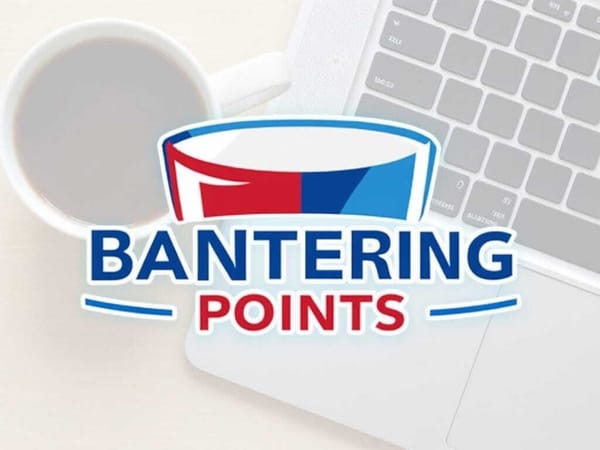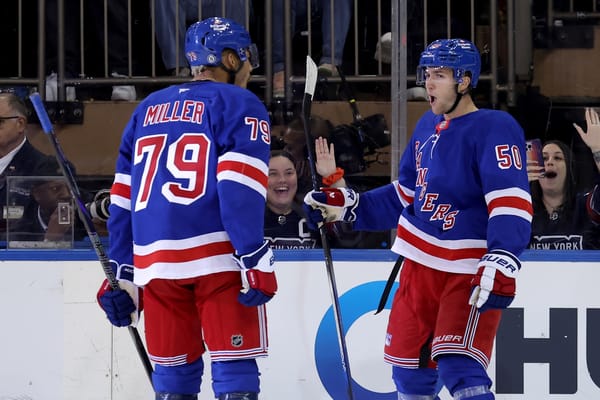Rookie Bonuses And Dead Money Play A Role In Rangers’ Cap Space And Offseason Approach
The New York Rangers are a team to watch during and after the draft according to Frank Seravalli of TSN because of their salary cap crunch.
A bit nerdy, but the #NYR have significant cap concerns and this information might dictate some moves that may or may not arise as a result of the salary cap bonus cushion limit. Something to watch. 🤓⬇️ pic.twitter.com/zU3RpozAvB
— Frank Seravalli (@frank_seravalli) October 6, 2020
This isn’t exactly new news, but it is something to consider ahead of round one of the draft and free agency that’s set to open on Friday. It primarily comes into play with decision the team has to make regarding Tony DeAngelo and Ryan Strome. DeAngelo received a qualifying offer, which he’ll likely turn down, and that will lead to an arbitration date getting scheduled. But as of this writing Strome hasn’t received one.
This is because he is in a good position to get a favorable one-year award in arbitration of $4.5 million, assuming it reaches that point. But that award would be just below the $4,538,958 threshold that allows a team to walk away. The Rangers may not want to expend that type of money for Strome, and could prefer dealing with other business first and then spending that money toward a center who may end up pivoting the third line.
In the case of DeAngelo, there’s still the potential of trading him, or at the very least the team could take a hardline approach in negotiations to keep his number down which would allow them to address some other business first. Keep in mind, once an arbitration hearing date is set, the team cannot trade him.
When it comes to bonus threshold for players, the Rangers are already projected to be over the 7.5% allowed ($6,112,500 of an $81.5 million cap) and anything over that amount is held against the salary cap to start the season. According to CapFriendly, the following roster players of note have bonuses in their entry-level contracts:
Igor Shesterkin — $2.85 million
Kaapo Kakko — $2.65 million
Adam Fox — $850,000
Filip Chytil — $350,000
Julien Gauthier — $300,000
Ryan Lindgren — $212,500
Then there’s presumptive No. 1 pick Alexis Lafreniere ($2.85 million expected), Morgan Baron ($850,000), Vitali Kravtsov ($850,000), Justin Richards ($500,000), and K’Andre Miller ($300,000) as players with significant bonuses.
Larry Brooks wrote that they could ultimately be liable for $10,912,500, which would mean the $4.8 million difference would be deducted from the team’s working cap space.
As Seravalli mentioned, depending on how the bonuses are written, the Rangers could reduce their cap commitment by removing potential requirements earned (ie: games played) or by having the player in the minors outright (Baron/Richards). Bonuses are broken into two categories, A&B.
The next section is sourced from the CBA, and a bit technical, and for the most part applies to Lafreniere, Kakko, and Shesterkin, as they have the biggest potential bonus totals. Keep in mind too that Shesterkin is still a rookie next season, and by default he could be in line to rack up a lot of money in bonuses in addition to Lafreniere. Fox also is of note because of how he’s expected to be utilized, but in his case the money is on the low end.
According to the CBA, “A” negotiated bonuses are worth $212,500 each, and a player can earn up to $850,000 per season.
Forwards can receive bonuses by being among the top six players in ice time (minimum 42 games), scoring 20 or more goals, recording 35 or more assists, scoring 60 or more points, finishing with a .73 points per game average (minimum 42 games), being in the top three forwards in plus-minus (minimum 42 games), making the end of season All Rookie Team, making the All-Star Game, winning All-Star Game MVP.
Defensemen can receive bonuses by being among the top four defenders in ice time (minimum 42 games), scoring 10 goals or more, recording 25 or more assists, scoring 40 or more points, finishing with a .49 points per game average (minimum 42 games), being among the top three defenders in plus minus (minimum 42 games), finishing in the top two in blocked shots (minimum 42 games), making the end of season All Rookie Team, making the All-Star Game, winning All-Star Game MVP.
Goalies can receive bonuses by:
- Playing 1,800 minutes
- GAA is lower than median GAA of all goaltenders who played 25 or more Regular Season Games. (If there is an even number of these goaltenders, the median will be the average of the two middle values.) (25 Game minimum, 30 minute minimum*)
- Save % is higher than median save % of all goaltenders who played 25 or more Regular Season Games. (If there is an even number of these the median will be the average of the two middle values.)(25 Game minimum, 30 minute minimum*)
- Winning 20 games
- Shutout total is greater than median number of shutouts of all goaltenders who played 25 or more Regular Season Games. (If there is an even number of these goaltenders, the median will be the average of the two middle values.) (30 minute minimum*)
- Making NHL All Rookie Team
- Making the All-Star Game
- Winning All-Star Game MVP/
“B” bonuses are defined as “League-wide Awards/Trophies and League Performance Bonuses Paid by League and/or Club”. They are outlined in the CBA like this:
Every Player party to an Entry Level SPC shall automatically be deemed eligible for the Individual “B” Bonuses listed below, which, if earned, shall be payable by the League in the amounts set forth below. There is no limit on the number of League-wide Awards/Trophy Bonuses and League Performance Bonuses that an individual Player may earn in a League Year that are payable by the League. For example, if a Player finishes 2nd in the Hart, 3rd in the Selke and 1st in the Lady Byng, he will receive all bonus amounts associated with each such Leaguewide Award/Trophy Bonus. In addition, if he also finishes 3rd among NHL forwards in goals, 2nd in points, and 4th in points per Game, he would also receive all bonus amounts associated with such bonuses.
A Player and Club may also negotiate individual bonuses payable by the Club for the League-wide Awards/Trophy Bonuses and League Performance Bonuses set forth below, except where specifically stated otherwise, in amounts to be individually negotiated between a Club and a Player (the Club and Player could agree to pay more, or less, than the amounts payable by the League, set forth below). The maximum aggregate amount that a Club can pay a Player (in addition to any amounts paid by the League to such Player) on behalf of a Player’s Individual “B” Bonuses is $2 million per season. There is no limit on the quantity (as opposed to the dollar amount) of League-wide Awards/Trophies and League Performance Bonuses a Player may receive from the Club.
For the major awards (Hart, Norris, Vezina, Selke, Rocket Richard), the money goes $250,000 for first to $50,000 for 5th place with the amounts being adjusted in increments of $50,000. The Calder Trophy has a breakdown of $212,500 for first, $150,000 for second, and $100,000 for third place. First Team All-Stars gets $100,000, and Second Team All-Stars get $50,000.
There is also money given to those who finish No. 1 through 10 in goals, assists, and points, with the top player getting $150,000, and No. 10 receiving $60,000 with the amounts being adjusted in increments of $10,000.
The range for points per game and ice time is $100,000 to $10,000 with amounts being adjusted in increments of $10,000.
For goalies, a goalie who finishes in the top five (25 game minimum) in goals against average, save percentage, or wins is eligible for up to $150,000 in each category, with fifth place receiving $110,000 with the amounts being adjusted in increments of $10,000.
I understand all of this is a lot to take in, but I just wanted to lay out the majority of it for the sake of calculating scenarios that could happen.
Ultimately, I think the Rangers will find a way to legally finagle the situation to the best of their abilities, and will also try and move Brendan Smith’s $4.35 million cap hit since his salary is only $2.35 million this season. It would likely require a sweetener, but it would create a bit of breathing room.
No matter how you slice it, the Rangers will be juggling a considerable amount of bonus money next season, but not all of it will actually be paid out unless the players in question have massive years
From the perspective of rounding out the roster, in addition to Strome and DeAngelo decisions, the Rangers will need to re-sign Alexandar Georgiev, Brendan Lemieux, and Phil Di Giuseppe. They also need to add to the left side to replace Marc Staal, and upgrade it if possible. So while on paper the Rangers have $23.1 million in space, it’s actually closer to $18 million, and even less than that when factoring in extensions to players expected to return.
This all will have a role in trades the team gets involved with during the draft, and subsequently who they decide to pursue in free agency.





